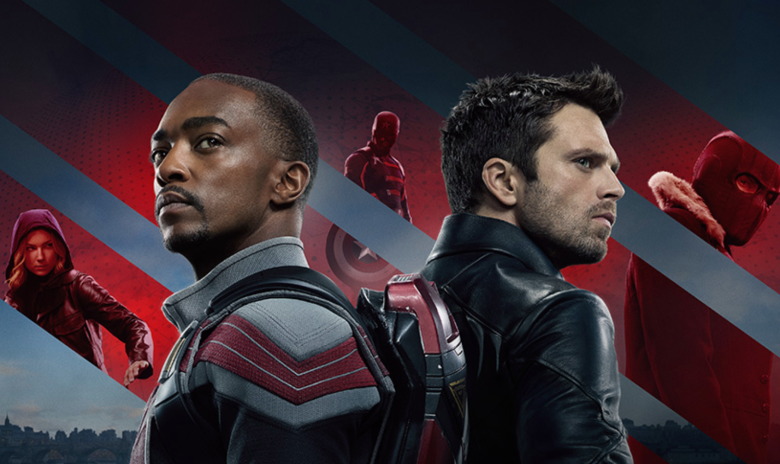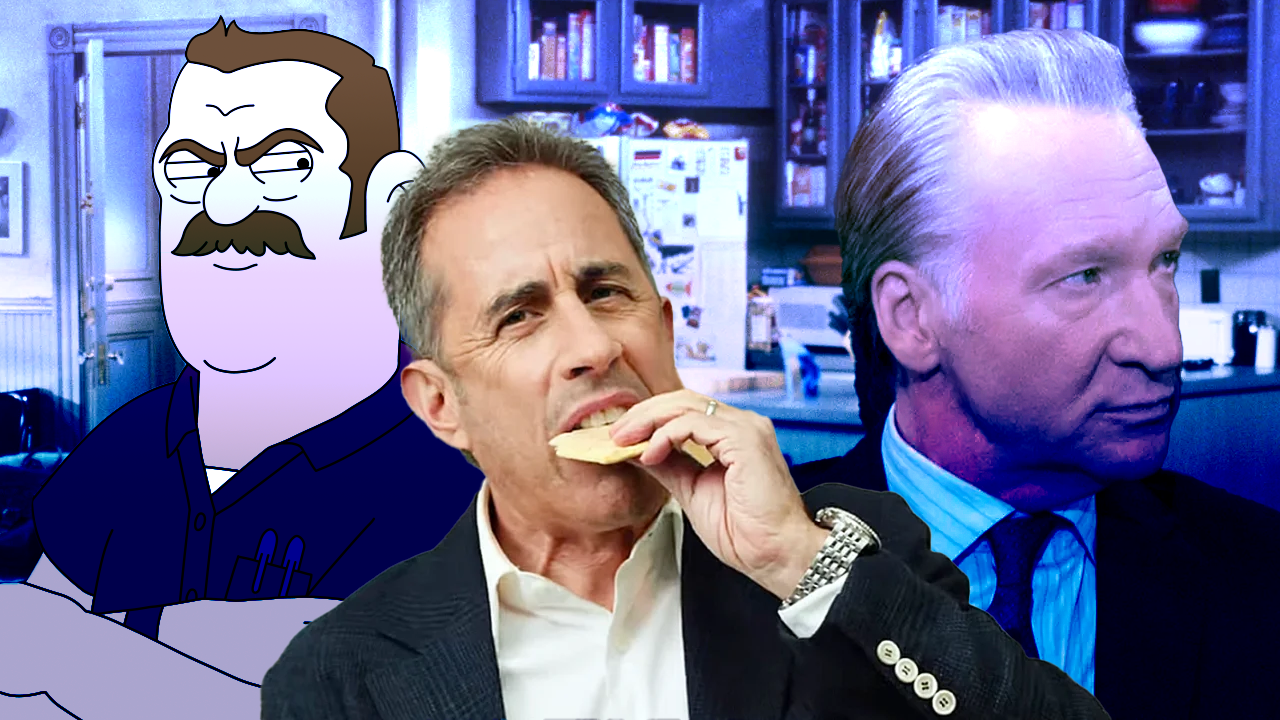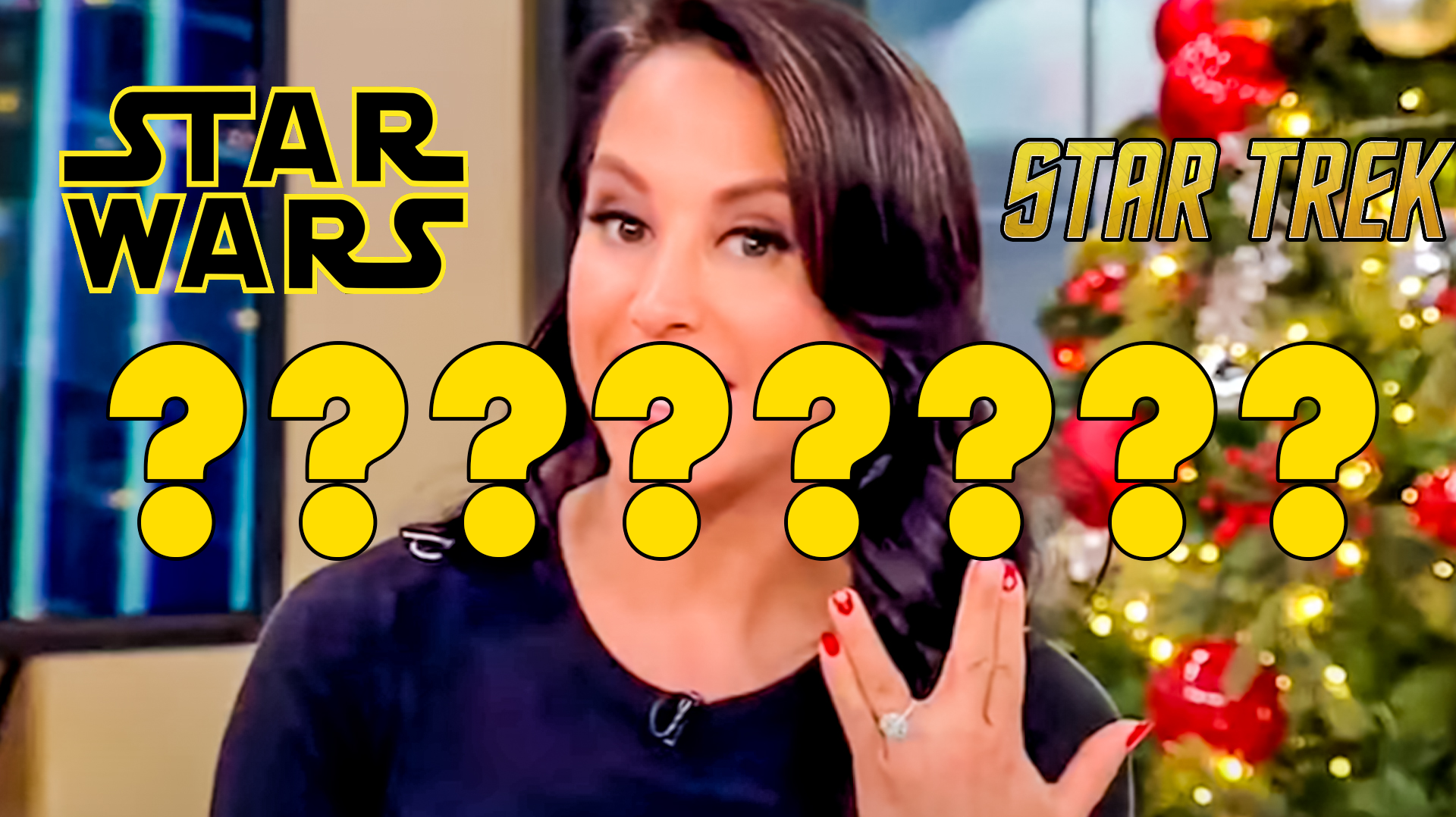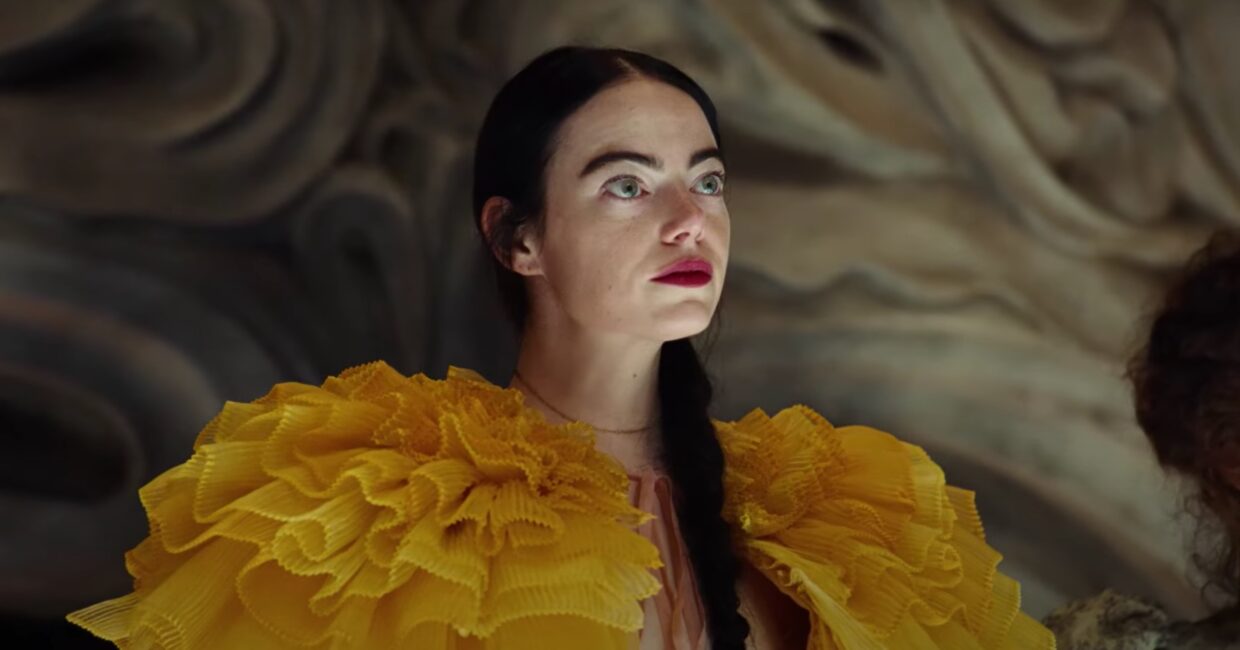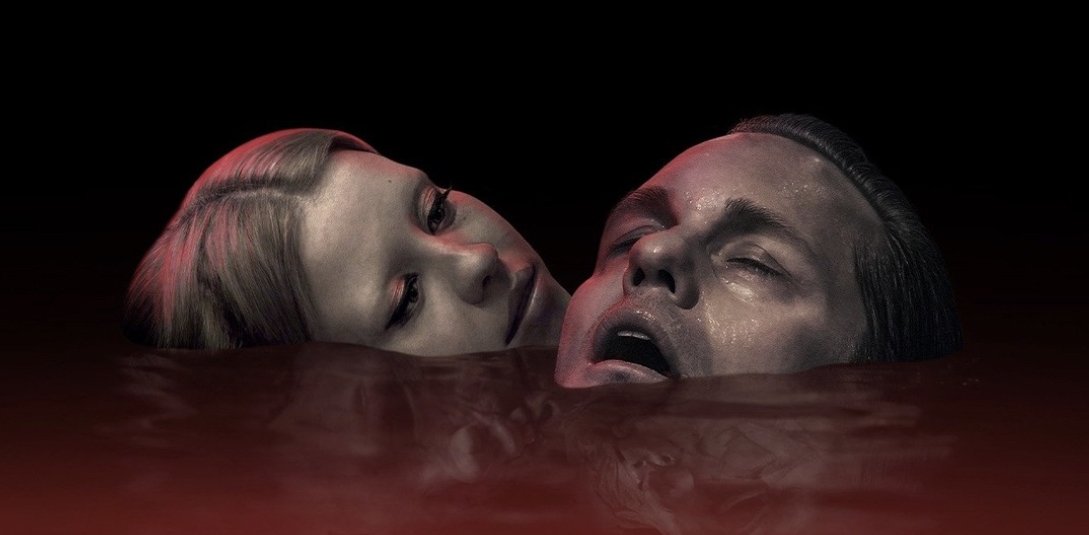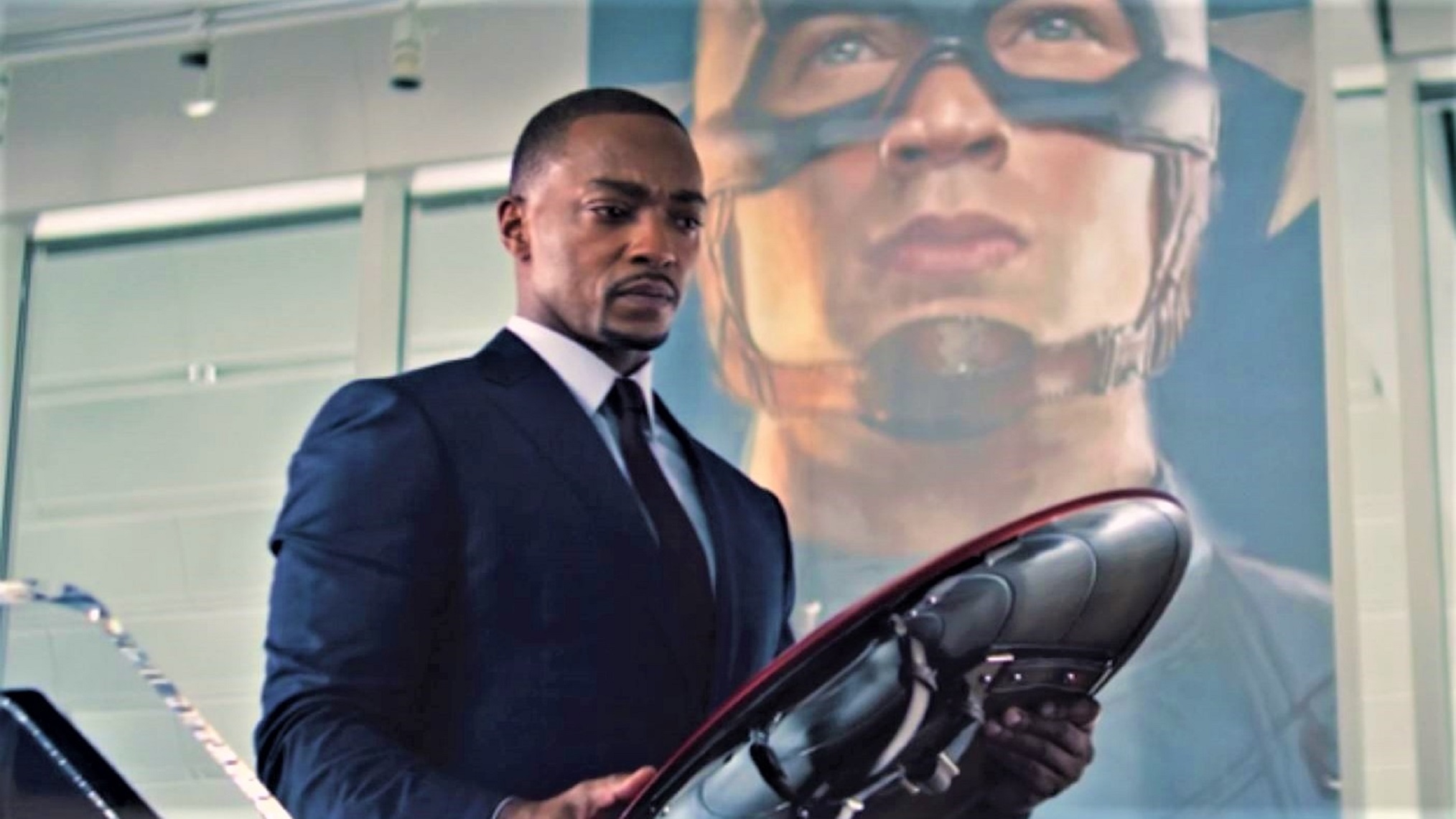
The Falcon and The Winter Soldier continues the adventures of Sam Wilson and Bucky Barnes. Sam, having been given the Captain America shield by Steve Rogers at the end of Endgame, is not sure he’s ready to take on the mantle of such an icon and continues working as Falcon for the US government. Bucky, having been granted a pardon for his time as a brainwashed assassin for Hydra, struggles to come to terms with all of those he had been forced to murder. He now works for the government and will naturally be paired up with Sam as they’ve worked together before during Captain America: Civil War.
While Sam debates whether or not he’s worthy of the shield and whether or not America will accept a black man as the hero, the decorated soldier of John Walker steps into the suit and takes the shield. John is portrayed as being devoted to upholding America through this title but also rather blind about perceptions of justice and how much jurisdiction he has. It becomes pretty obvious he’s not going to remain as Captain America by the end of the series. This is implied subtly in episode 2 and explicitly by the end of episode 4.
The series follows Sam, Bucky, and John trying to stop a group of revolutionists that sprung up after the return of all the missing people Thanos snapped away. The five-year period between Infinity War and Endgame is viewed by the revolutionists as a better era because the lack of people meant more open borders. The revolutionaries also happen to have come into possession of a super-soldier serum that makes them more of powerful threat when it comes to making their voices heard, considering they are refugees that will be forced to relocate by the Global Repatriation Council, aiming to place the world back the way it was before Thanos.
The revolutionaries fit the familiar template of the sympathetic villain. The most famous example being Black Panther’s villain of Killmonger who stressed that Wakanda should be more open than insular with its resources for black people, a lesson that the hero of King T’Challa eventually takes to heart.
The revolutionaries in Falcon and Winter Soldier are composed of those who feel the world has betrayed refugees thanks to a council that will not listen to their demands. Their feelings are valid and indeed Sam does come to recognize and stress what these people were fighting for.
However, the series does try a bit too hard to make sure these people are seen as the villains. This is evident in that many of them do little to question their tactics of murders and bombings, reasoning that it is just the next step in trying to save themselves. They also utilize their super-soldier powers with a dangerous nature that often cause accidental deaths.
And, perhaps the most easy-to-digest villain trait, the group is entitled the Flag-Smashers. It’s a name chosen to portray how they’re fervently against the toxic elements of patriotism and nationalism but it’s also a label that also garners villainous intent for those who are blinded by patriotism. A fight between Captain America and the Flag-Smashers doesn’t exactly sound like the most nuanced battle on the issues regarding borders and refugees.
Of course, the true villain of the series is the returning antagonist of Zemo, last seen in Captain America: Civil War. Zemo is broken out of prison to help out Sam and Bucky but ultimately has bigger plans of keeping the super soldier serum a secret. Just as in Civil War, he prefers to do his work in the shadows and mostly relies on the heroes to squabble amongst themselves.
What’s most interesting about Zemo as a villain is that he is taking advantage of a system that is crumbling under its own systemic issues. The Flag-Smashers are portrayed as the bad guys for wanting a world without borders but it’s borders that become the biggest hurdle for the mission of Sam and Bucky as well an opportune aspect for Zemo.
The opening sequence features Falcon rushing to save a kidnapped man before he is escorted over a border and out of US jurisdiction. Sam, Bucky, and Zemo have to venture into the criminal sanctuary of Madripoor and must assume new identities to not cause a stir in the country.
But perhaps one of the more blunt moments features Sam, Bucky, and John facing off against warriors of Wakanda for the rights to hold Zemo as their prisoner. During this bout Zemo has enough time to enjoy a drink before making his escape for his real mission: ensuring nobody else has access to a super soldier serum.
Just like in Civil War, Zemo hangs back for the final act of the series and mostly just watches the chaos unfold. To finish the job he instructs his butler of Oeznik to murder the remaining super soldiers of the Flag-Smashers. So Zemo wins again making him the most effective villain of the MCU.
In episode 2, Sam meets Isaiah Bradley, a veteran super soldier who had fought the Winter Soldier in the Korean War. However, Bradley spent thirty years in prison for his efforts and is so disillusioned by his country that he is unwilling to help Sam with his investigation to the serum. Bradley even says bluntly that a black man could never be Captain America, considering that he was also given the serum and did not receive the same treatment as Steve Rogers. Sam tries to not only prove Bradley wrong by becoming the hero but also dedicating a portion of the Captain America exhibit to Bradley’s efforts so that he will not be the forgotten super soldier.
Bradley’s inclusion is one of the most important parts of such a story in how it stresses the systemic racism of the American system. However, Bradley’s story reveals just how knee-capped such a series tries to handle this topic. Bradley spends a lot of time talking about how America has betrayed the black man in the past but not so much in the present. This is a pretty important part of the story considering Sam has doubts that the populace will not accept him as Captain America simply on the basis of his skin color.
Showcasing this racism in the series, however, is…clumsy. There are really only two scenes that display the systemic racism that inspires Sam to bite back. There’s the subplot of Sam trying to help his sister Sarah acquire a loan for her boating business and instead of the loan officer making unjust denials based on economic status and racial bias, he is instead framed as being judgemental of Sam being a casualty of the Thanos snap and having five years of vacant income. Even when Sam makes himself known as Falcon, the officer still won’t help him out.
The other scene features Sam and Bucky being approached by cops who suspect there may be a violent confrontation between the two. The cops try to hassle Sam until they realize he is Falcon and their tone shifts.
There is something to be said of these scenes in how they reflect the impression that black people have when encountering white people with authority who hide racist implications behind regulations. And it kinda gets the message across but never feels as though Sam Wilson is delivering some major blow to the perceptions of race when he shows up as Captain America. When he finally dons the costume we all knew was coming, the populace is either surprised or excited to see a black man as Captain America. So when Sam gives his big speech at the end of the series about how there are those who would rather not see someone of his color in the attire and shield once wielded by Steve Rogers, it makes one question who is saying this.
This is not to imply that there are no racist people who would say Sam can’t be Captain America simply for the color of his skin but the series doesn’t really show us this aspect. It doesn’t even appear as the easy-to-digest dog-whistly manner of suggesting that Sam can’t be Captain America because of his record being called into question by commentators. That’d be an interesting angle to explore but, well, this series is only six episodes and the audience would probably get bored if there weren’t some action in each entry.
A complaint that is really more of a favoring for fanservice is that Sam and Bucky are not a gay couple. The two characters do not have wives or girlfriends, though Bucky has a romantic interest in one woman that he is reluctant to pursue. They also have an incredibly queer-baity moment where they sit with their legs locked together while trying to be honest with their feelings for each other.
First off, it was very pie-in-the-sky to think that Disney of all studios would have an entire series centered around a gay hero couple when their insertions of LGBTQ people into their stories is more tertiary than primary. The most we’ve ever gotten from Disney on this front are mentions of same-sex couples who are not main characters, the appearance of a same-sex family in the background, or kissing from nameless lesbians in the background. And the fact that conversative media goes absolutely apeshit when these most nothing of moments occur is really sad and proves just how slow progress has been on this front.
But secondly, on a more positive note, it is refreshing to see Sam and Bucky actually have a more open and honest relationship for an action thriller series. Easily the best scene in the entire series is when Sam and Bucky are tossing around the Captain America shield while sharing their concerns and fears about moving forward in their lives. There’s an emotional honesty between them that didn’t feel present in the other Marvel movies. Bucky talks a bit about how he is still haunted by the past and Sam talks about how he feels Steve didn’t have the best perceptions when it came to handling issues of systemic racism and combating the flaws in the American government.
And, no, this scene is not meant to be some slam on Steve Rogers being a bad Captain America, as some people have misinterpreted. Steve was frozen in the 1940s and revived in 2011. He did not live through the civil rights movement or the Cold War and the only villains he fought were sci-fi-wielding fascists and aliens from other galaxies. It’s not an insult to say that Steve doesn’t have that clearest of pictures on race in America when he had to learn all about the various movements in his 30s.
Another troubling aspect of the series more for the audience than the show itself is how John Walker is perceived. The initial reactions within the first two episodes of his appearance ranged from the ranty anger that this was going to be the permanent Captain America and the childish antics of bullying actor Wyatt Russell.
It’s really sad that fans of Captain America specifically can’t read more into how stories are framed past the hero’s iconography. A similar situation happened in the comics where during Secret Empire, Steve Rogers was revealed to be working with Hydra, even though by the end of that series Cap is back to his usual heroic self.
It should become obvious to anyone who has eyeballs that John Walker is not going to stay as Captain America. He is framed more as a commentary on how the perceptions of such a hero seemed to be more tied with appearance than actions. John looks the part of Steve Rogers but he does not act like Steve Rogers. He’s gung-ho, clumsy, terrible at de-escalation, and kills in situations where he did not have to do so. John Walker is less of a hero and more of a figurehead, the very thing Steve hated being pegged as during the war.
Even more concerning about John Walker is that some people saw him as the Captain America they always wanted at the end of Episode 4. John is shaken when his fellow soldier is killed by one of the Flag-Smashers and pursues one of them into town. In front of a crowd, John uses his shield to brutally murder the Flag-Smasher. The scene is framed as hideous and horrifying, the way John picks up his shield now stained with the blood of a man he just killed who was begging for his life.
Also a concerning element is how John appears in the final episode. After committing the public murder in episode 4, he is subdued by Sam and Bucky and stripped of his rank in disgrace in episode 5. Episode 5 even ends with him planning to go out and seek revenge on his own terms. But in episode 6, the implied redemption he’d seek comes off…hallow. With very little dialogue, John goes from being the enemy of Sam and Bucky to an ally. Like they’re cracking jokes and working in tandem as though their initial fight over the shield was just a bad day at the office.
By the end of episode 6, John fulfills the Marvel prophecy to become the villain of US Agent, also known in the comics as Super Patriot. For stepping into such a role, John is framed more as though he’s going to do better and that he’s going to make a difference even though the history of US Agent in the comics suggests that he’s going to be more of an adversary than an ally to the ideals of Captain America. At any rate, his redemption to better become a hero is so sudden that it’s off-putting to see such a wild swing between episodes.
Ultimately, I did enjoy The Falcon and the Winter Soldier slightly more than WandaVision. I think it’s mostly because a lot of its political ambitions are on point and even if a handful of them feel more told than shown, the message is much more clear by the end of the series. Sam becoming Captain America feels more whole, having worked up the critical skills in addressing national issues to be an even more observant hero. It doesn’t just feel the whole series was merely a run-up to him getting a new costume.
All that being said, a lot of the politics of the show become messy in that so many issues resolve too quickly and without much more than a “we can do better” speech to close out the picture. The ending also feels all over the place the way we dart from the devilishly pleased Zemo to the hopeful US Agent to the conspiring Carter to the content Bucky to the inspired Sam to the tearfully grateful Bradley.
There’s just so much ground covered in this series that it rarely feels as though it hits a bullseye with any topic. WandaVision had more mixed messaging but The Falcon and the Winter Soldier perhaps features too many messages that are simply not given enough time to breathe and expand in a 6-episode miniseries.

 “My Spy: The Eternal City” Review
“My Spy: The Eternal City” Review  “Deadpool & Wolverine” Review
“Deadpool & Wolverine” Review  “The Boys: Season Four” Review
“The Boys: Season Four” Review  “The American Society of Magical Negroes” Review
“The American Society of Magical Negroes” Review  “Twisters” Review
“Twisters” Review  “Sausage Party: Foodtopia” Review
“Sausage Party: Foodtopia” Review  “Robot Dreams” Review
“Robot Dreams” Review  “Godzilla x Kong: The New Empire” Review
“Godzilla x Kong: The New Empire” Review 